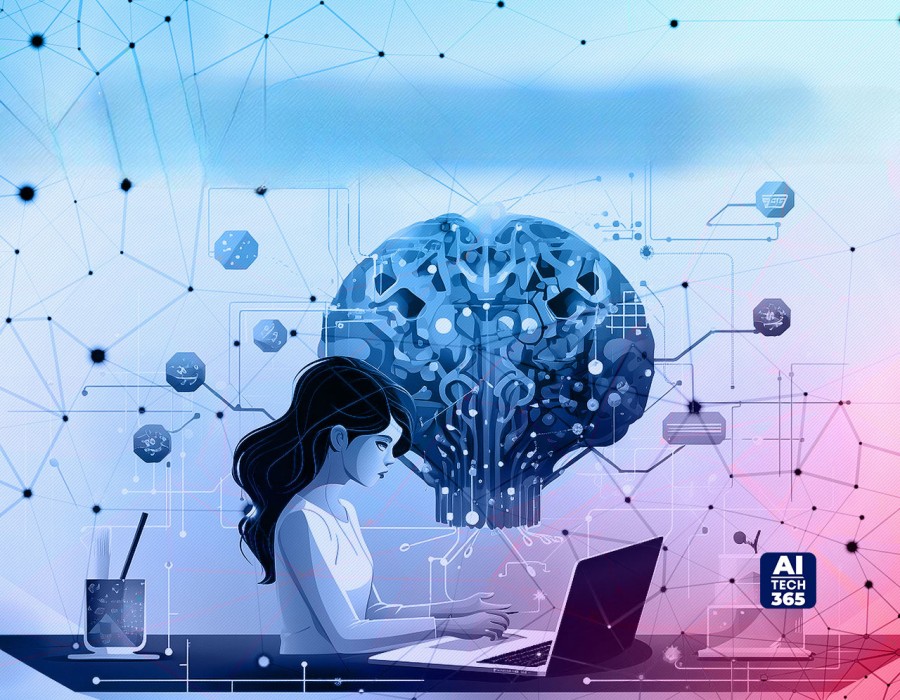In today’s fast-evolving digital landscape, cognitive automation is opening new possibilities by combining artificial intelligence (AI), machine learning (ML), and robotic process automation (RPA). This article explores how cognitive automation is revolutionizing various industries by improving efficiency, decision-making, and customer satisfaction.
What Is Cognitive Automation?
Cognitive automation refers to the use of AI and ML technologies to automate tasks traditionally handled by humans. Unlike traditional automation, cognitive automation can process complex data and handle tasks that require decision-making and contextual understanding. According to McKinsey, businesses adopting cognitive automation tools can automate 50-70% of tasks, reduce data processing time by 50-60%, cut labor costs by 20-30%, and achieve significant returns on investment (ROI).
Examples of cognitive automation include intelligent document processing, virtual agents, predictive analytics, and intelligent data extraction, among others.
Benefits of Cognitive Automation
Here are some key advantages cognitive automation offers to businesses:
- Enhanced Efficiency: Cognitive automation uses AI to process large amounts of data, making tasks more efficient and less time-consuming.
- Effective Unstructured Data Handling: It can manage and analyze different data types, such as invoices and customer queries, making it easier to automate workflows.
- Faster Deployment with Pre-Trained Solutions: Businesses can quickly deploy pre-trained automation solutions that require minimal customization, reducing the time to operationalization.
- AI Integration: By incorporating AI technologies like natural language processing (NLP) and image recognition, cognitive automation enhances existing automation techniques, providing more comprehensive solutions.
- Data-Driven Decision Making: It provides valuable data insights that support better decision-making, ensuring companies remain competitive in their industries.
Cognitive Automation vs. Traditional Automation Tools
Cognitive automation offers a more sophisticated approach than traditional automation tools like RPA. While RPA handles repetitive, rules-based tasks, cognitive automation leverages AI and ML to process unstructured data and make decisions based on context. This ability to adapt to complex scenarios makes cognitive automation a game-changer for businesses looking to achieve higher levels of efficiency.
Key Differences Between Cognitive Automation and RPA
- Usability: RPA focuses on automating routine, structured tasks, whereas cognitive automation mimics human thinking to analyze complex data.
- Scope: RPA excels in structured data management for tasks like transaction processing, while cognitive automation processes unstructured data, improving decision-making.
- Technology: RPA uses rule-based logic, requiring minimal coding. In contrast, cognitive automation utilizes advanced tools like ML and text analytics for more in-depth processing.
- Benefits: RPA increases productivity by automating repetitive tasks, whereas cognitive automation continuously learns and adapts, improving processes over time.
Applications of Cognitive Automation
Cognitive automation has a broad range of applications, including:
- Data Consolidation: Automatically classifying and organizing product data from multiple sources into structured formats.
- Invoice Processing: Extracting and standardizing information from various invoice formats for accounting purposes.
- Customer Support: Using NLP and speech recognition to retrieve customer information and provide tailored support.
- Personalized Recommendations: Leveraging AI engines to offer personalized customer experiences based on preferences and behavior.
Challenges of Cognitive Automation
Despite its potential, businesses may face several challenges when implementing cognitive automation, including:
- Customization Needs: Tailoring cognitive automation to specific enterprise requirements can increase implementation time and complexity.
- Delayed ROI: Achieving ROI may take longer due to the need for ongoing planning, iteration, and customization.
- Expertise Shortages: Finding skilled professionals in AI and automation can be difficult, potentially slowing down adoption.
- Algorithm Bias: Ensuring that AI algorithms remain unbiased is essential to avoid biased decision-making.
- Cost Management: Without proper oversight, automation costs can escalate quickly, making cost management essential.
- Security Risks: Cognitive automation may expose businesses to new security vulnerabilities as bots gain access to sensitive data and systems.
Final Thoughts
Cognitive automation represents a transformative opportunity for businesses, enabling improved efficiency, smarter decision-making, enhanced customer experiences, and streamlined operations. As companies embrace this technology, they can automate non-routine tasks, process unstructured data, and make data-driven decisions to gain a competitive advantage. By integrating AI capabilities, businesses can unlock unprecedented levels of productivity, agility, and innovation.





Comments